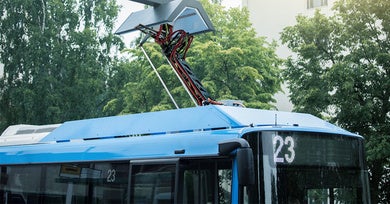3 Myths about Public Private Partnerships

A few years ago, while driving back home on a Sunday evening, I was anxious as I listened to live news on the radio. On that day, the governor of Minas Gerais, one of the biggest Brazilian states, would announce his decision whether to run for senate in the coming elections or not. If he said yes, most of the cabinet ministers at the state level would also leave. As the Head of the State Public Private Partnerships (PPPs) Unit, these were the people I interacted directly with daily. For me, this meant one thing: I would have to spend the best part of the following months busting myths about PPPs.
I knew this because people newly engaged with PPPs often hold strong beliefs about them, some of which are just plain wrong. They are, in fact, widespread myths.
The real problem about those myths is not so much that they do not reflect the real world accurately. The problem is that, by believing in them, governments might generate unnecessary risks and create problems for the effectiveness of private participation in infrastructure. I had already prepared a general presentation called “PPPs Myth-buster”.
Here are the three most frequent phrases I’ve heard exposing the myths lined up in my toolkit:
Myth No. 1: “Let’s do this project as a PPP because the government has no money to do it.”
PPPs are not a solution for the lack of money. Paying for infrastructure projects, PPPs or otherwise, generally means charging resource from users or taxpayers and–very rarely–from value created by infrastructure itself and captured by people other than users (e.g. real state price increases from a metro station). There is no way around this limitation, so a PPP is only a tool to finance infrastructure, much like any type debt. It’s plain simple: in PPPs, the private sector doesn’t pay for anything, it only puts money upfront expecting to get it back later, along with interests.
You may also like:
- TechFins, MSMEs and e-commerce are reshaping the economic development of the LAC region
- How to invest with a gender approach
- Latin-America and the Caribbean are surfing the ride-hailing wave
So, if a government doesn’t have money to pay for infrastructure in the long run, and users cannot or should not afford to pay for it, PPPs won’t work. The problem about this myth is that the fiscal consequences of PPPs are often harder to identify. So, believing in it can lead to implementing PPPs which can turn out to be difficult to afford by taxpayers in the future.
Myth No. 2: “Let’s go for a PPP so we (as government) don’t have to work too much in delivering the project.”
PPP deals require a lot of political and technical effort by governments, to be delivered effectively. First, during PPP preparation (planning and assessments prior to the tender) governments need to have qualified professionals working together under an adequate governance structure. Second, during contract management, governments need to have in place a team to monitors service delivery, enforce contractual obligations and regulate the financial aspects of the contract.
Third, there is a need for qualified political energy to adequately communicate the meaning of PPPs to society. The problem about this myth is that governments can embark on expensive PPP programs that fails to deliver because they are not adequately resourced to deal with the project cycle.
Myth No. 3: “We have this amazing new idea, let’s turn it into a PPP and sign the contract next month”
If PPP projects are to be effective, they need to be carefully identified and scoped, thoroughly appraised and professionally structured, before they are taken to the market. This is nothing beyond the truism that “planning pays-off.” The process, however, inevitably consumes time. This myth builds pressure to expedite PPPs and skip specific appraisal exercises, causing long-term contracts being signed without proper assessments, such as value for money, positive cost/benefit outputs or inadequate social or environmental impacts.
So, (1) PPPs do not create fiscal space, (2) they require the commitment of sizable government resources, and (3) PPPs take time to be designed and implemented. Why are we thinking of PPPs in the first place? Because they can capture the flexibility of the private sector, align it to the government’s objectives and improve the quality of risk management in contracts in large scale infrastructure initiatives, in ways that other procurement mechanisms cannot. This create value, amplify our capacity to deliver quality infrastructure and optimizes costs in the life-cycle of infrastructure assets.
Ultimately, under the right conditions, they can improve lives.
As I learned on the radio that evening, the governor did decide to run for the senate. Without a moment’s hesitation I got my toolkit ready and prepared myself for the possible coming encounters. On that very evening I realized how important and cost-effective knowledge sharing initiative were: If we want PPPs to continue delivering results for service users and taxpayers throughout Latin America and the Caribbean, we need to elevate the debate.
Therefore, events such as the PPP Americas are extremely important for governments. They allow for a consolidation of a shared understandings about the prospects and limitations of PPPs thus enabling governments to pursue PPP programs for the right reasons, instead of the risky business of searching for myths.■
LIKE WHAT YOU JUST READ?
Subscribe to our mailing list to stay informed on the latest IDB Invest news, blog posts, upcoming events, and to learn more about specific areas of interest.
Subscribe


